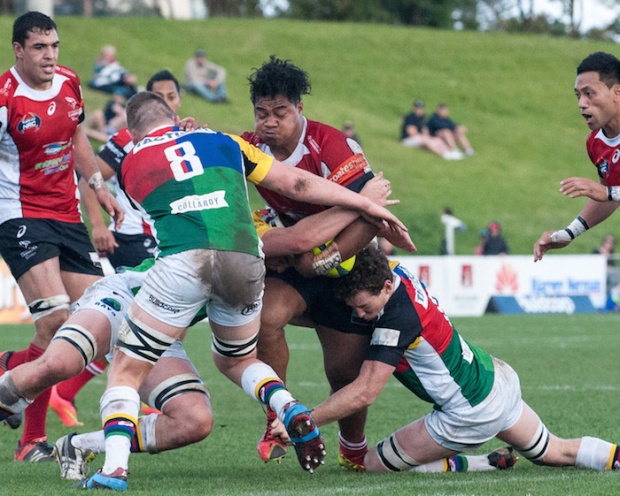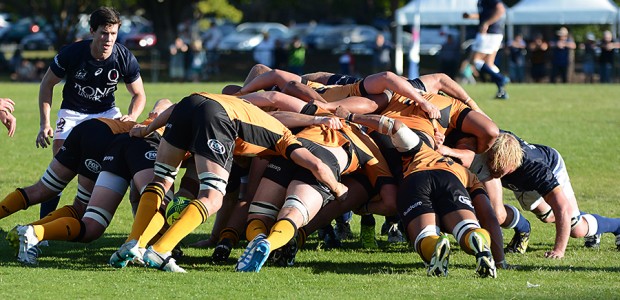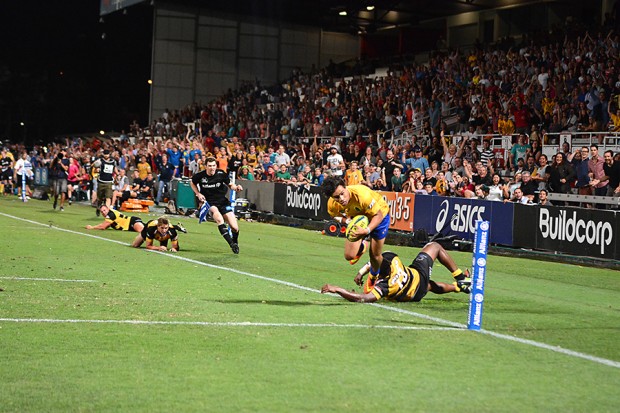We are just days out from the first round, and it’s fair to say that there seems to be a bit more attention around the NRC than in previous years. While that may be in part due to fans trying to look for anything to watch other than the Wallabies, it is also difficult to deny the anticipation that comes when the squads are looking stronger, the franchises are better organised and there is a bit more of an air of excitement around what will happen come Saturday, when the first game kicks off in the West.
In 2014 the competition was introduced with new laws, different point systems and nine teams. Now it is one of the most exciting things in Australian rugby (especially given our dismal performances in Super Rugby and national level). The best of club rugby, combined with Super Rugby. The reason for that is due to the big changes in the law book that have led to a faster, more attacking style of rugby.
It may surprise you, but the competition has been more far reaching than many realise. Highlighted as a great example of furthering future laws of the game by the World Rugby governing body, many laws trialled in the NRC have gone on to be adopted at Super Rugby and at Rugby Championship levels, including:
- Bonus points being awarded to teams who score three or more tries ahead of their opponent.
- Teams being awarded a penalty after time has expired will be able to opt for a lineout
- Kickers having just 60 seconds to take their shot from the time a try has been scored or a penalty given, and 45 seconds for a penalty kick.
- Not straight lineout throws are left alone if the opposing team doesn’t contest.
This experiment of trying new laws has paid off big time. World Rugby want more tries scored and a faster game. Quite frankly, as fans, we do too! And while many may criticize this style as only allowing the backs to shine, the NRC has shown that if you don’t have a dynamic, hard working forward pack – you don’t win games.

So with the season only a few days away, it seems like an opportune time to remind ourselves of some of the noticeable law changes (apart from the ones mentioned above), and why it does much to improve the game:
Value of a Try:
- Try: 6 points. Conversion: 2 points. Penalty Goal: 2 points. Drop Goal: 2 points
This rule has been changed for the 2016 season, and it’s the one that seems to be turning a lot of heads. Previously, the NRC had five points for tries, three points for conversions, and two points for penalties and drop goals. This worked brilliantly, as there was an emphasis placed on the need to convert your tries. Considering how Australia seems to have a torrid record of having good kickers lately, it is something we definitely need to continue to value. The worth of the conversion couldn’t be summed up more than the game last year between Melbourne Rising and the Western Sydney Rams, where the Rams went down 36-37 despite scoring six tries to five. The reason? Missed conversions.
Now, with this law being the only change this season, it makes me speculate on its potential impact to the game. While I am all for running rugby, the previous scoring system worked really well. I have a slight worry that 6-2-2-2 may reduce the importance of converting tries and kicking in the game. And that is something we in Australia especially should be promoting. Also, six-point tries may also put the focus less on running rugby and more other on facets in the game such as mauls.
This rule is also being trialled in the NZ Heartland Championship this year too, so watch this space. But hey, when the wider rule changes were introduced in 2014 we were sceptical then, so this may work out just fine.
Scrum rules

- Team has 30 seconds to form a scrum from the time the referee gives the mark.
- Opposing scrum half is not allowed to enter the gap between the flanker and number 8, even if they stay behind the ball
Scrums are one of the underrated success stories of the NRC. One of the most frustrating parts of any game, both when you’re playing and when you’re watching, is when scrums have to be reset. In the current law book, there must be no delay when forming the scrum, meaning that teams can be penalised for intentional delaying. While this law is needed, this has often led to scrums being repeatedly reset. But allowing thirty seconds not only builds anticipation for the scrum, but it is also safer for the players, allows to scrum to be carried out safely, and has resulted is less resets.
The second major scrum law is one I cannot agree with more strongly. In the current law, the scrum half is able to compete for the ball at the end of the scrum, as long as they stay behind the ball. The NRC laws makes it much more difficult to do that, especially for the attacking scrum. From personal experience, nothing is more frustrating than winning a scrum, then having an annoying little opposition scrum half interfere with our scrum half getting the ball out to the backs. It only made us want to smash the little bugger more! Make the scrum ABOUT THE SCRUM, and keep the game moving!
General Play

- Players will be allowed to take quick throw-ins regardless of whether someone else has touched the ball
- Television match official to only be consulted about tries and in-goal plays.
- Increased latitude will be given to where penalty and free kicks are to be taken
The general play rule changes make for a really exciting game, and this is the innovative backbone of law changes that the NRC has become known for. The changes with scrums and set piece means that the ball is in play for much longer (over 35 minutes per game on average, compared to Super Rugby with 32 minutes), and rules like quick throw ins (which have also been adopted at higher levels) not only keeps the game moving, and gives us moments like Liam Gill’s legendary NFL throw last year in the QLD derby.
Also, the usage of TMOs is one that further speeds the game up. So often, such as in the NRL, the TMO is consulted for any single tussle or event in the field, and even more so when a team has scored. While it helps the referees manage the game, from a viewer perspective it’s a complete mood killer. Having it only focused for when it matters in the context of a game (i.e. try or no try) speeds it up a lot more, and also is good for the referees, to make them less reliant on technology to do their job.
The changing of the law book is one of the great things about this competition. It has opened it up to brilliant attacking rugby. Last year Andrew Kellaway and Jono Lance made no secret of their enjoyment of the format. Many super rugby players have mentioned that the speed and ferocity of the game is on the same level as to that of Super rugby levels. That can only be beneficial to the club players coming through with aspirations of wearing green and gold.
The laws and product are great, so go and see some games! I cannot stress it enough! It’s much better than the abysmal, going-through-the-motions performance the Wallabies put in on Saturday, and at a fraction of the cost of a $170 ticket. High speed rugby and excitement in the NRC (with a taster of the two best teams last year below), sure sounds a lot better than the endless painful slog that are Wallaby test matches at the moment. Get excited, and get out there #ForTheGame.

